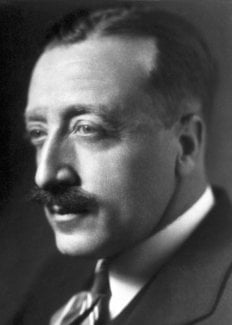John H. Northrop
Biographical

John Howard Northrop was born in Yonkers, New York, on July 5th, 1891. He is a direct descendant of Joseph Northrop who settled in New Milford, Connecticut in 1639, of Jonathan Edwards, President of Princeton University, 1758, and of Frederick C. Havemeyer, whose family presented Havemeyer Hall, the Chemical Laboratory, to Columbia University. His father, John I. Northrop, an instructor at Columbia, was fatally injured in a laboratory accident shortly before his birth. His mother, Alice R. Northrop, who formerly taught botany at Hunter College, New York City, returned to teaching and was responsible for the introduction of nature study into the curriculum of New York public schools. Her former country home in Massachusetts is maintained by the “Northrop Memorial” as a school of nature study for New York schoolchildren.
After public school education, Northrop entered Columbia University in 1908 to study zoology and chemistry under T.H. Morgan and J.M. Nelson. He graduated Bachelor of Science in 1912, Master of Arts in 1913 and received his Ph.D. in chemistry in 1915. He was appointed W.B. Cutting Travelling Fellow and spent the next year in Jacques Loeb’s laboratory at the Rockefeller Institute. The following year, he was appointed to the staff of the Institute and with the exception of his war service as a Captain in the Chemical Warfare Service (1917-1918), he has remained with the Institute ever since, becoming an Associate in 1917, Associate Member in 1920, and Member in 1924. In 1949 he was appointed Professor of Bacteriology, University of California, and later, Professor of Biophysics.
Northrop’s researches at Columbia were chiefly concerned with carbohydrates and his early work at the Rockefeller Institute was connected with theories of duration of life. Whilst in the service, he discovered a fermentation process for acetone, which he developed to the pilot-plant stage, and on demobilization and return to the Institute, he worked with Loeb on a kinetical study of enzymes essential to life processes. In 1929 he isolated pepsin in pure crystalline form by techniques which were later used by himself and other workers to crystallize trypsin, chymotrypsin, carboxypeptidase, and pepsinogen. He studied the proteins of viruses and antibodies, and succeeded in isolating a nucleoprotein which had bacteriophage activity: his suggestion that the activity was due to nucleic acid was later proved to be correct. During World War II, he was consultant to the National Defense Research Committee and he studied the mode of action of war gases and methods of detection, developing an apparatus for their automatic detection and analysis. His more recent researches have included work on the origin and relationship of viruses and the transforming principle.
Professor Northrop is the author of Crystalline Enzymes, published in 1939. He edited the Journal of General Physiology (Rockefeller Institute) for some years and he has written numerous papers on the physical chemistry of proteins, agglutination of bacteria, kinetics of enzyme reaction, and the chemical nature of enzymes.
He was awarded the Stevens Prize (Columbia) in 1931; Chandler Medal, 1936; Daniel Giraud Elliot Medal, 1939; the Certificate of Merit (U.S. Government), 1948; Alex. Hamilton Medal, 1961. He has received honorary Doctor of Science degrees from the Universities of Harvard, Columbia, Yale, Princeton, and Rutgers; and honorary Doctor of Law from the University of California. He is Honorary Fellow of the Chemical Society (London) and a member of many other scientific societies.
Professor Northrop married Louise Walker in 1917. Their only son, John, is an oceanographer and their only daughter, Alice, married Professor Frederick C. Robbins, Nobel Laureate in Medicine, 1954. He is fond of riding and sailing, plays golf and tennis, but his chief hobbies are field shooting and salmon fishing.
This autobiography/biography was written at the time of the award and first published in the book series Les Prix Nobel. It was later edited and republished in Nobel Lectures. To cite this document, always state the source as shown above.
John H. Northrop died on May 27, 1987.
Nobel Prizes and laureates
Six prizes were awarded for achievements that have conferred the greatest benefit to humankind. The 14 laureates' work and discoveries range from quantum tunnelling to promoting democratic rights.
See them all presented here.
